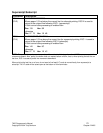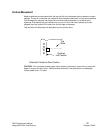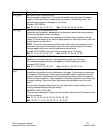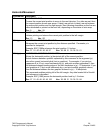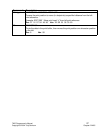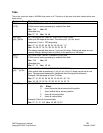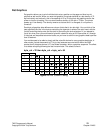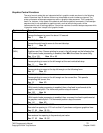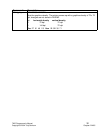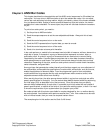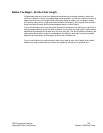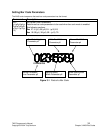
7265 Programmer’s Manual
29
Copyright © 2004 TallyGenicom Chapter 2 ANSI
Dot Graphics
Dot graphics allows you to print individual dots at any position on the page and thus to print
pictures as well as text. When you enter dot graphics, the printer defaults to a dot density of 72
dpi horizontally and vertically, and a line spacing of 12 lpi. Exiting from dot graphics returns the
printer to its prior lpi setting. You can also choose a density of 144 dpih x 72 dpiv. The printer
powers up in low density. The density remains as last set until it is changed, or until power is
turned off.
Each byte of graphics data defines one column of dots that is six dots high. You can think of the
least significant six bits in the byte as controlling the topmost six wires of the print head, with the
first bit controlling the top wire and the sixth bit controlling the sixth wire down. If you wanted to
fire all six wires, then you would send a byte with a decimal value of 63. Byte values of 0 through
31 decimal are interpreted as control codes, so you have to add 64 to any graphics data byte less
than 32 decimal.
You would expect to be able to simply add the value 64 decimal to every graphics data byte; in
other words, just set the seventh bit. This is risky because some variations within the 3000
product family interpret decimal 127, the Delete character, within a graphics sequence. The effect
is to delete everything following the last line terminator. The safest course is:
byte_val < 32 then byte_val = byte_val + 64
WEIGHT WIRE
11
!!
22
!!
43
!!
84
!!!!!
16 5
!!
32 6
!
65 66 68 72 88 40 88 72 68 66 65
Figure 2-5 Dot Column Coding



